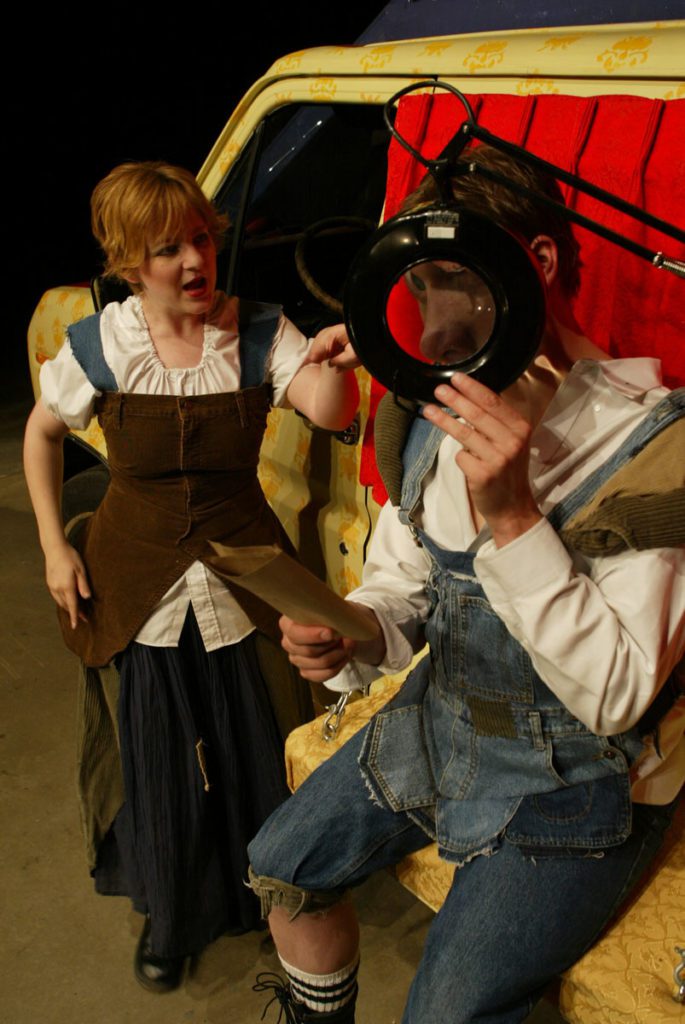Buntport Theater has returned to its giddy but thoroughly committed roots with a remount of its 2004 comedy noir McGuinn & Murry.
Fun and games turn serious – that is to say, funny – when Joan Murry (Rollman) starts a mystery in motion by sending a suggestive letter to McGuinn’s house, where his wife reads it. Certain that he’s having an affair and will kill her, the wife, Budge, begins to plot with her own lover, Pauly.Formerly played by Brian Colonna and Hannah Duggan, the show’s tough but underemployed gumshoes are played on this outing by Erik Edborg and Erin Rollman. Whiling their days away in an office where no dame ever knocks on the door, they entertain themselves by making up cases to solve.
The plot thickens as sundry characters get in on the action, all of them played by Edborg and Rollman. Edborg’s McGuinn lacks some of that Bogart panache but gets laughs with his lightweight alcoholism (he drinks whiskey through a straw), and Pauly is even funnier, an eyepatch-wearing Englishman with that country’s particular strain of nebulous sexuality.
Rollman calls up her particular affinity for this period, expressed in the James Thurber collection of Buntport’s show 2 in 1. Her hair has fine ’40s rolls, but it’s her speech and stance that so perfectly connote the era. Her Murry is a tough- talking dame, interested in nothing but getting the job done, while Budge is a high-pitched flit of a wife. Esther’s the lonely, guarded bartender, while the Fat Man is a gender-eliminating parody of a Mafia kingpin.
Joining them onstage is the sign of Buntport’s special magic, its dexterity with set design. A massive partner’s desk that serves the two detectives converts over the course of the play into a bar (front and back), a diorama for a car- chase scene and, most magically, a fully appointed apartment with bedroom, kitchen and clothesline. It’s like a magic show built into a comedy.
Giggles are sprinkled throughout the play, and they never abandon the central conceit. When you hear flimflam, doll and chickie coming from their mouths, you know the artists at Buntport have gotten it right again.
Grade: A-
-Lisa Bornstein, May 22, 2008, Rocky Mountain News






